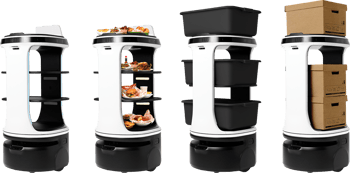Restaurants face rising costs at every turn. The prices of food, fuel, and property have never been higher. In this challenging business environment, it’s important to find ways to lower your expenses wherever possible. You may be able to start by cutting down on the costs that go into hiring restaurant staff. While there are a lot of ways to reduce your hiring costs, many restaurants overlook the value of a compelling restaurant job description.
How a Good Restaurant Job Description Can Lower Costs
Your restaurant job description must do more than attract candidates. It has to attract the right candidates. This is important for both recruitment and retention. Your restaurant job description should bring in prospective hires that are right for the job and likely to stick around for awhile.
An effective restaurant job description begins with “targeted messaging,” said Rahkeem Morris, the co-founder and CEO of HourWork, a QSR-focused staffing tool startup that helps businesses recruit and retain hourly workers.
Morris explained that “QSRs are losing over half of their employees by day 90. That’s $1,600 for every single person that turns over at a restaurant.”
This underscores the importances of targeting the right candidates from the start with your recruitment messaging. How you craft your restaurant job description is an important first step in hiring restaurant staff that are a good fit for your business.
5 Tips for Creating an Effective Restaurant Job Description
The content of your messaging to prospective hires is just as important as the steps you take to amplify that message. The restaurant job description you post to job sites must say more than “help wanted.”
Restaurants are facing labor shortages, high turnover, and difficulty hiring restaurant staff. Your restaurant job description needs to stand out in a crowded space. Here are 5 tips for making that a reality for your restaurant:
1. Read job postings from your competitors
Start by doing a little research on the competition. How are other restaurants in your lane attracting new hires? What kind of language are other restaurants of your size and focus using in their job descriptions? What kinds of incentives do your competitors offer in their restaurant job description messaging?
See something you like in one of your competitor’s job postings? There’s no law against using this language as inspiration for your own job description. But it’s also important to create messaging that stands out from the countless other job ads your prospective hires will read.
See what other restaurants are saying, and use that information to find the balance between originality and effectiveness in your restaurant job description.
2. Emphasize what you have to offer workers
Rather than lead off with a description of responsibilities, place the focus on what your job has to offer employees. Be specific in outlining the competitive pay, strong benefits, and unique perks that your employees enjoy. Highlight features such as a salary-based payment structure, paid time off, health benefits, 401(k), tuition reimbursement, etc.
Think about the types of benefits your employees require or appreciate, such as regular hours, nightly family meals, cash tips, weekly paychecks, menu discounts, and more. Articulate the kinds of everyday benefits that might help your prospective employees enjoy a high quality of life and a good work life balance.
For instance, Morris noted that “One of the things that we’re seeing being helpful is when an employer mentions things like childcare or transportation.”
Create a competitive compensation, benefits and perks package, and spotlight this package in your restaurant job description.
3. Identify your restaurant’s unique needs
Now that you’ve told your prospective hires what’s in it for them, be sure that you clearly articulate what you need in exchange. Naturally, there are certain common features to every restaurant job description such as the geographical location of your restaurant, the job title, and the typical responsibilities connected to that title. There shouldn’t be too many surprises in that list of responsibilities for the experienced server, bartender, or line cook.
But what about the expectations unique to your working environment? Does your restaurant experience a large rush of business on NFL Sundays? Is your restaurant a popular brunch spot that draws people in for its excellent coffee and mimosas? Do your employees need the tech savvy required to handle POS systems?
Describe the unique needs of your restaurant, and create a job description that conveys your expectations for meeting those needs.
4. Spell out the job qualifications
In addition to clearly articulating the job responsibilities, make sure you are crystal clear about job qualifications such as age, years of experience, formal education, and required skills. You don’t want to waste time interviewing prospective hires who lack the basic foundational qualifications for the job.
Indicating these qualifications upfront can make it easier to screen out applicants who fall short of the experience or age threshold, as well as those who just aren’t very good at following directions. You’ll also want to let employees know if they can expect additional screening steps such as a background check or drug test, and indicate whether or not the position comes with any on-the-job training.
5. Don’t Forget to Edit!
As a restaurant owner, it’s possible that writing isn’t exactly the first skill listed on your resume. Fortunately, you don’t need to write a masterpiece to get better outcomes out of your restaurant job description. You simply must be able to communicate your thoughts in a clear, well-organized, and grammatically correct fashion.
This requires editing. Do not skip this step. To the contrary, be thorough in your editorial process. Write your job description first, incorporating the tips from above. Then, walk away from your writing for an hour or a day—whatever works for you.
Then, return to it with fresh eyes. Read for typos, grammar issues, or any information that might be unclear. Tighten your message, eliminate unneeded verbiage, and deliver a concise restaurant job description.
Pro Tip: Read your work out loud. It makes it easier to spot mistakes and identity language that isn’t clear. It’s also always a great idea to have a trusted friend or colleague give your work a second read.
Finding the Right Audience
Creating effective messaging for prospective hires is one thing. Reaching those potential employees with your messaging is another thing altogether. A growing number of restaurants are turning to digital marketing firms and staffing agencies for help identifying and reaching targeted pools of talent.
The top HR and staffing providers use a combination of data analytics and hands-on training to improve recruitment outcomes, especially for those businesses looking for ways to lower the cost of hiring restaurant staff. Find out how a third-party staffing provider can help you better articulate and amplify your recruitment messaging.
[Photo by Alex Paganelli on Unsplash]





